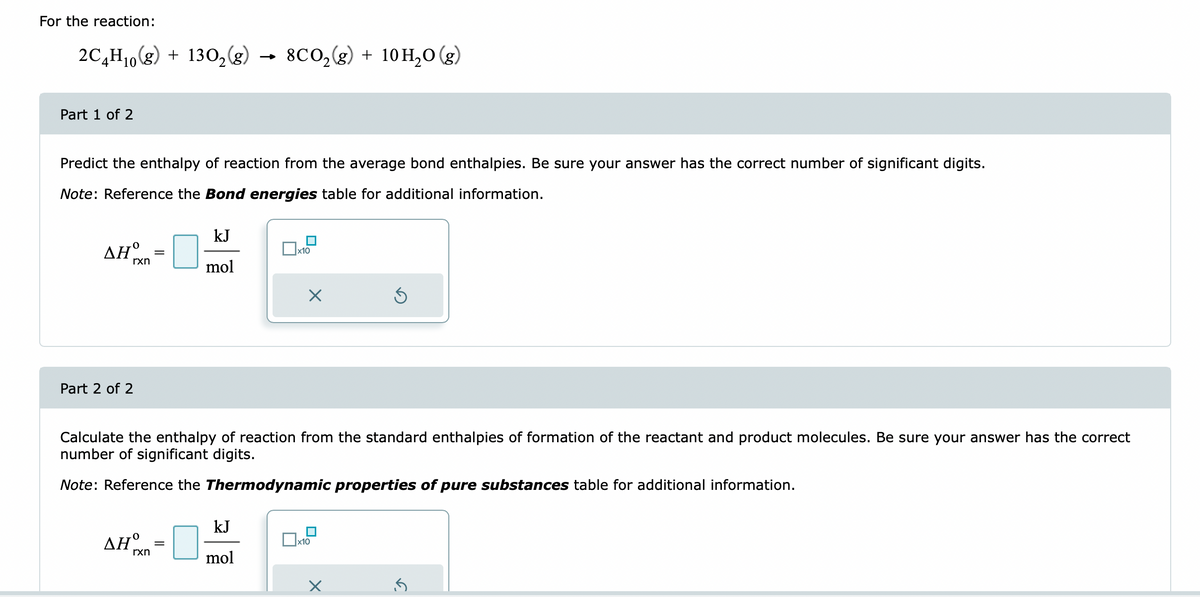For the reaction: 2C,H1,g) + 130,(g) 8Co,(g) + 10H,0 (g) Part 1 of 2 Predict the enthalpy of reaction from the average bond enthalpies. Be sure your answer has the correct number of significant digits. Note: Reference the Bond energies table for additional information. kJ AH° = rxn mol Part 2 of 2 Calculate the enthalpy of reaction from the standard enthalpies of formation of the reactant and product molecules. Be sure your answer has the correct number of significant digits. Note: Reference the Thermodynamic properties of pure substances table for additional information. kJ AH° = rxn mol
Thermochemistry
Thermochemistry can be considered as a branch of thermodynamics that deals with the connections between warmth, work, and various types of energy, formed because of different synthetic and actual cycles. Thermochemistry describes the energy changes that occur as a result of reactions or chemical changes in a substance.
Exergonic Reaction
The term exergonic is derived from the Greek word in which ‘ergon’ means work and exergonic means ‘work outside’. Exergonic reactions releases work energy. Exergonic reactions are different from exothermic reactions, the one that releases only heat energy during the course of the reaction. So, exothermic reaction is one type of exergonic reaction. Exergonic reaction releases work energy in different forms like heat, light or sound. For example, a glow stick releases light making that an exergonic reaction and not an exothermic reaction since no heat is released. Even endothermic reactions at very high temperature are exergonic.
For the reaction:
Part 1)
Predict the enthalpy of reaction from the average bond enthalpies. Be sure your answer has the correct number of significant digits.
Note: Reference the Bond energies table for additional information.
|
Part 2)
Calculate the enthalpy of reaction from the standard enthalpies of formation of the reactant and product molecules. Be sure your answer has the correct number of significant digits.
Note: Reference the
|
|
Pls help me with this question asap!!!

Trending now
This is a popular solution!
Step by step
Solved in 2 steps with 2 images









